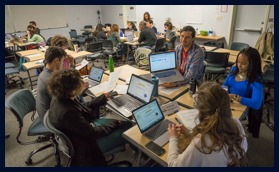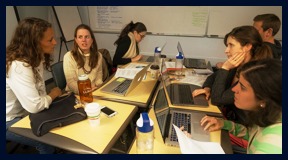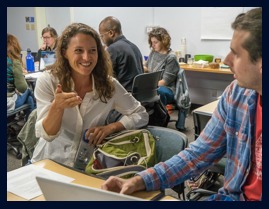Should impact investors be allowed to accept returns on investment that exceeds the economic benefit delivered to community stakeholders who are impacted by their transactions? Is this relationship mutually beneficial, or purely extractive? These questions were posed by Morgan Simon during her recent Profiling Ventures for Impact Investing session at the January FMS session. Leveraging her deep knowledge of social justice issues to challenge existing paradigms in the impact investing landscape, Simon addressed several key challenges, these included: a lack of consistency and transparency among impact investors on stakeholder engagement, defining the role of the state vs. private sector models, and building strong methodologies around the identification and collection of key impact performance data.
When defining “impact” Simon provided a definition from the Merriam-Webster English Dictionary, “to impinge upon, especially forcefully.” She did not mince her words when discussing the nature of transparency in the deal structuring process; enumerating unintended consequences that have resulted from well-meaning interventions crafted by social entrepreneurs and impact investors (that often occur with little-to-no community stakeholder engagement). Morgan asked of the cohort, “what can help ensure that impact investment and social enterprises empower people in need, rather than impinging upon them?” Her critique sought to more accurately channel the intentionality of investors and entrepreneurs towards livelihood challenges as they are defined by the communities themselves.
The FMS cohort in Monterey was engaged in a critical analysis of failures of the state, philanthropic and international development models (by utilizing an examination of public vs. private school debates in Kenya and the US). Participants were asked to discuss the nature of essential services and rural infrastructure; the conversation highlighted the contentious nature of defining roles and responsibilities for the public sector. Private sector service delivery models were introduced as a potential solution to the state’s failure to hold up its end of the bargain in providing adequate access to education, infrastructure, and healthcare. What ensued was a complex debate around the risks of supplanting public goods with a neo-liberal, profit-centric, model targeting the world’s poorest consumers.
The longstanding business axiom “what gets measured, gets managed” was also subject to revision over the course of the two day session. While engaging in group work, the cohort was encouraged to debate the relative merits of various environmental and livelihood indicators. Morgan noted that measurement did not necessarily lead to impact outcomes in the absence of effectively aligned management and incentive structures. Of particular note was Morgan’s call for enhanced transparency around the auditing of impact metrics and stakeholder engagement methodologies.
Simon’s session, taken in the context of the entire two week Monterey training session, highlighted the dynamic nature of the impact investing space; as a nascent industry, the landscape appears to be in a state of near constant flux. Her perspectives on social justice brought the emergence of segmentation in the market among investors (and LPs) into sharp relief, with perspectives that run the gamut from Pi Investments to Goldman Sachs. Increasingly, impact investors are coalescing around specific investment and social/environmental impact theses (i.e., African agriculture, conservation, financial inclusion, empowering women, etc.) In the search to create a common language around impact metrics, measurement, and reporting the daunting challenge will be to negotiate the tremendous diversity of market players, geographies, and deal structures for investments that can vary from $50,000 by an asset manager with $15 million (AUM) to $200+ million by institutional investors with $300 billion (AUM).
Morgan has spent the last decade engaged in impact investment, emphasizing community empowerment, leadership and ownership. She co-leads Pi Investments as Managing Director, building a 100% impact portfolio with an emphasis on community empowerment and environmental sufficiency. In that capacity, she evaluates investments across asset classes, including direct investments. Morgan is also a co-founder of Toniic, where she served as founding CEO from 2010-2013. Toniic is a global network of early-stage social investors looking to move $4.5B into impact. She is on the investment committee for The Working World, a fund for stakeholder-owned businesses in the US, Argentina and Nicaragua, and co-chair of the board of Restaurant Opportunities Centers (ROC) United, a worker center supporting 10,000 restaurant workers nationwide. Previously, as the founding Executive Director of the Responsible Endowments Coalition, Morgan brought together 100 colleges and universities, helping to move their $200 billion in endowment dollars towards impact investment. Morgan has also worked with grassroots organizations and the United Nations Development Program (UNDP) in Mexico, Honduras and Sierra Leone, and in domestic microfinance with Women’s Initiative for Self Employment (WI). She received a B.A with High Honors in Economics and Political Science from Swarthmore College.







